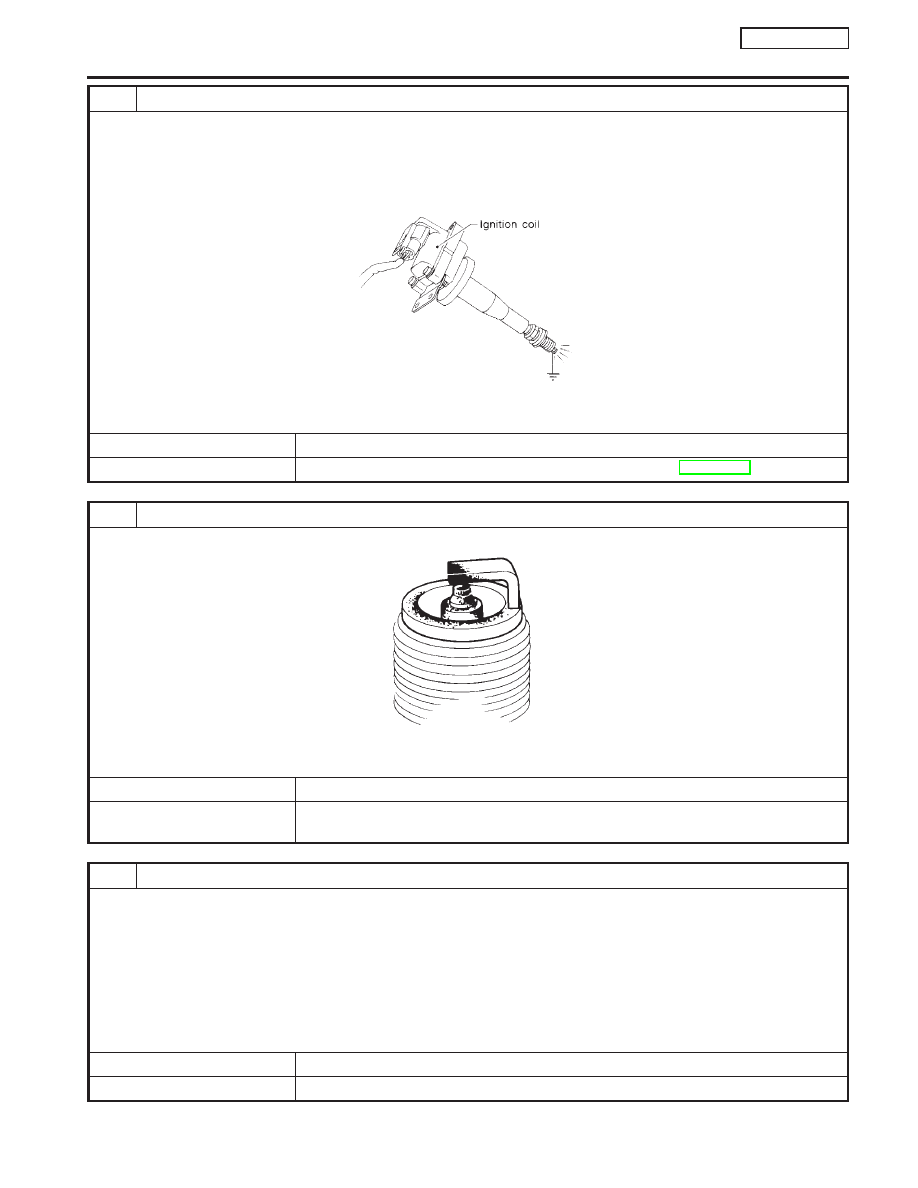Nissan Primera P11. Manual - part 167

6
CHECK IGNITION SPARK
1. Turn Ignition switch “OFF”.
2. Disconnect ignition coil assembly from rocker cover.
3. Connect a known good spark plug to the ignition coil assembly.
4. Place end of spark plug against a suitable ground and crank engine.
5. Check for spark.
SEF575Q
OK or NG
OK
©
GO TO 7.
NG
©
Check ignition coil, power transistor and their circuits. Refer to EC-QG-323.
7
CHECK SPARK PLUGS
Remove the spark plugs and check for fouling, etc.
SEF156I
OK or NG
OK
©
GO TO 8.
NG
©
Repair or replace spark plug(s) with standard type one(s). For spark plug type, refer to
“ENGINE MAINTENANCE” in MA section.
8
CHECK COMPRESSION PRESSURE
Refer to EM section.
I
Check compression pressure.
Standard:
1,324 kPa (13.24 bar, 13.5 kg/cm
2
, 192 psi)/350 rpm
Minimum:
1,128 kPa (11.28 bar, 11.5 kg/cm
2
, 164 psi)/350 rpm
Difference between each cylinder:
98 kPa (0.98 bar, 1.0 kg/cm
2
, 14 psi)/350 rpm
OK or NG
OK
©
GO TO 9.
NG
©
Check pistons, piston rings, valves, valve seats and cylinder head gaskets.
DTC P0300 - P0304 NO. 4 - 1 CYLINDER MISFIRE,
MULTIPLE CYLINDER MISFIRE
QG16
I
18DE
Diagnostic Procedure (Cont’d)
EC-225